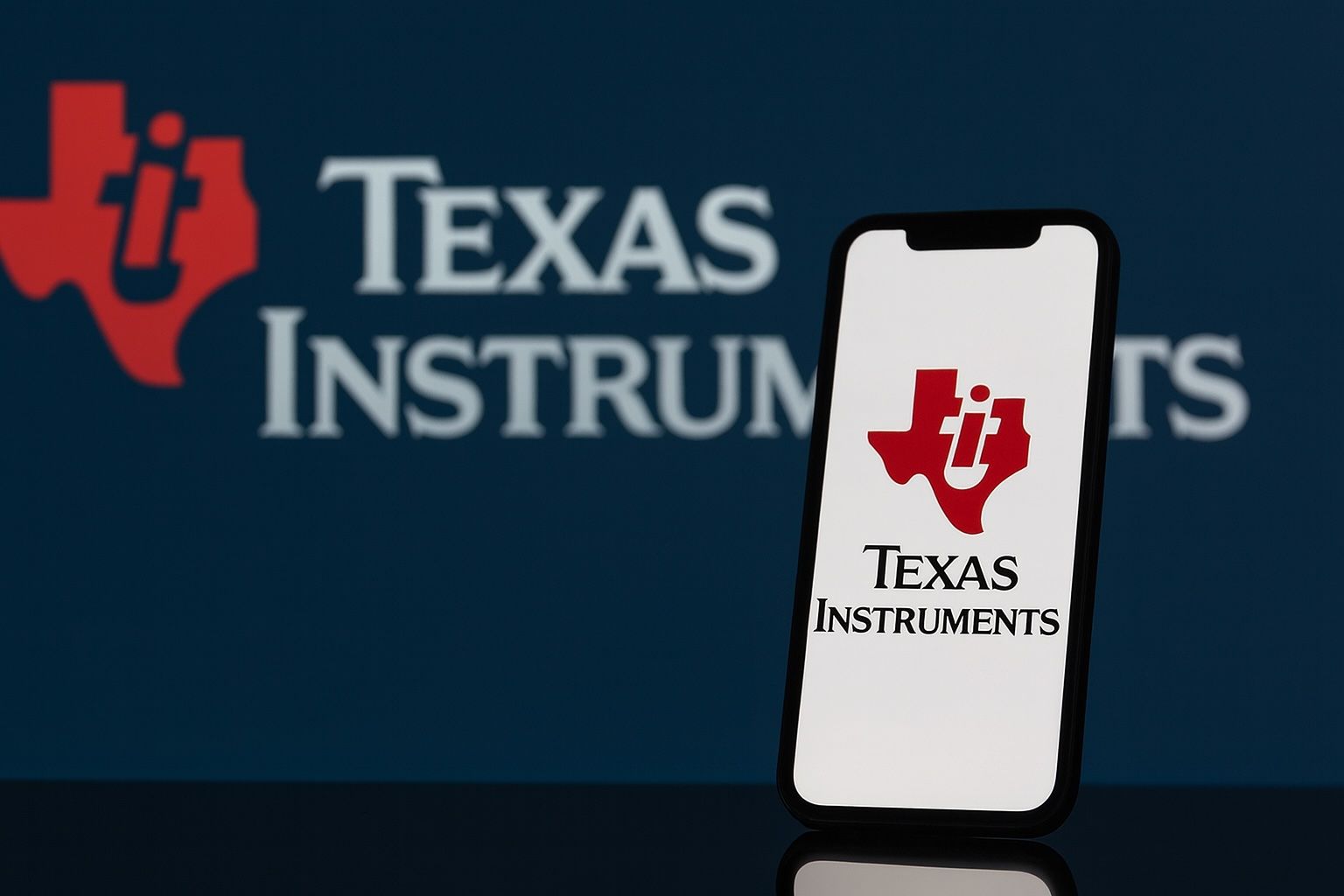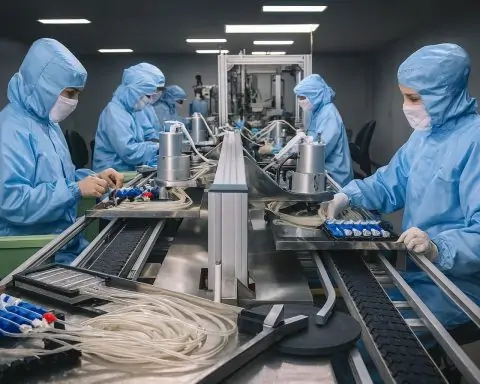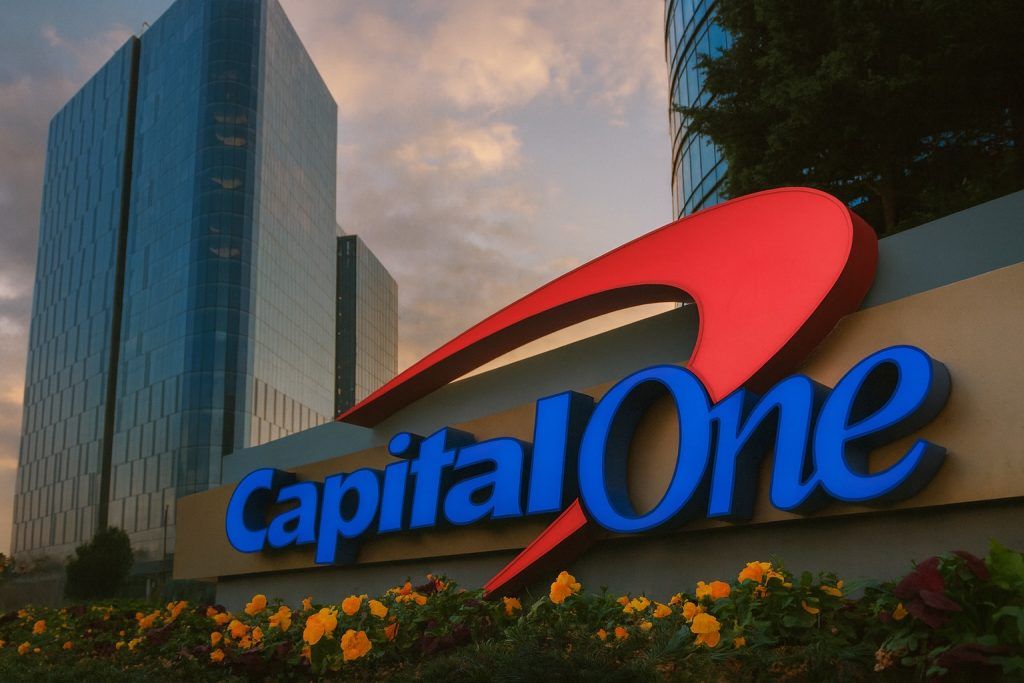- Stock Price: TXN closed around $176.58 on Oct 17 and hovered near $180 by Oct 21 (52-week range ~$140–$222) [1] [2]. On the week it was roughly flat (Monday +1.7%, Tuesday +0.8% pre-earnings).
- Q3 Results: Revenue $4.74 billion (up 14% YoY, beating ~$4.65B consensus) and EPS $1.48 (vs $1.49 expected) [3]. Analog segment (industrial/auto chips) drove much of the growth.
- Dividend: Board approved a 4% raise to $1.42/share (payable Nov. 12), marking 22 years of consecutive increases; yield ~3.2% [4]. This “healthy dividend” helps support the stock despite market headwinds.
- Outlook: Q4 2025 guidance was weaker than analysts hoped – revenue $4.22–$4.58B (consensus ~$4.51B) and EPS $1.13–$1.39 (vs $1.41 est) [5]. Management flagged continued tariffs and mixed industrial demand.
- Stock Reaction: After the Oct 21 earnings/guidance, TXN shares plunged ~6–8% in after-hours trading (to ~$168) [6] [7], erasing earlier small gains. The drop underscored investor concern that the company’s outlook may be too cautious.
- Analysts: Bank of America and Mizuho both cut TXN to “Underperform,” citing tariff risks and limited AI exposure [8] [9]. By contrast, some firms (e.g. Goldman Sachs) remain bullish, keeping $230–$255 targets. The consensus is a “Hold” with an average 12-month price target around $210–213 (about 15–20% above current) [10] [11].
- Valuation: TXN trades at a premium – roughly 32× next-year EPS and 31× EV/FCF [12], well above peers like Analog Devices. It has ~30% net margins, fortress-like cash flow and a pristine balance sheet, but near-term growth is modest.
- Industry Trends: Semiconductors are bifurcated. AI/server chips are booming – e.g., TSMC just raised its 2025 revenue forecast by ~30% on surging AI demand [13] – while traditional markets (industrial, automotive, personal electronics) are soft. TI’s CFO noted that auto demand is still lagging with inventory overhang [14] [15].
Texas Instruments finds itself “at a crossroads” going into Q4. As TS2 TechStock noted, TI still offers a “healthy dividend, fortress financials, and industry leadership in analog chips” [16] – qualities that attract value investors. But its recent “underperformance reflects real concerns: growth has stalled post-pandemic, and the market’s hype has shifted to AI chips where TI isn’t a major player” [17]. In other words, TXN’s core analog/embedded markets have cooled even as AI and memory chip stocks surge.
Q3 Earnings Beat Estimates, But Q4 Guidance Disappoints
On Oct. 21 after the market close, Texas Instruments reported Q3 revenue of $4.74 billion, up 14% year-over-year and modestly above analysts’ ~$4.65B forecast [18]. Embedded Processing and Analog chips both grew, reflecting broad demand. GAAP EPS was $1.48 (down 16% YoY) – just one cent below the $1.49 Street estimate [19]. Management highlighted strong cash flow (trailing-12-month operating cash $6.9B, free cash $2.4B [20]) and said 4 of 5 end markets were recovering.
However, TI’s Q4 outlook was conservative. The company guided $4.22–4.58B in revenue and $1.13–$1.39 in EPS [21]. Both ranges fell short of the ~$4.51B/ $1.41 street consensus. CFO Rafael Lizardi attributed the cautious view to ongoing tariff-related slowdowns and uneven demand. “Data points in the automotive and industrial end markets remain very mixed, especially in light of tariffs and trade-disputes,” said Stifel’s Tore Svanberg [22]. He added that Wall Street expected a “moderate downside” to Q4, but TI’s guidance was “perhaps a tad weaker than expected.” In short, investors heard that the analog-chip cycle may be pausing.
The mixed earnings headlines sent TXN on a rollercoaster. Earlier on Oct. 21, bullish chatter (e.g. the dividend news and peer upgrades) had pushed TXN modestly higher. But after-hours, the stock fell sharply. By 5pm ET, shares traded around $168 (down ~6.8%) [23] – a decline of roughly 7–8% from the close. This drop suggests the market was disappointed by the weak guidance. (For context, some after-market reports pegged the fall as steep as ~8.2% [24].) Traders noted that Friday’s dip followed pressure from Wall Street. Earlier in October, BofA had cut TXN to “Underperform” with a $190 target (citing limited AI upside and tariffs) [25], and on Oct. 20 Mizuho similarly downgraded TXN to underperform. [26] These moves likely primed the stock to sell off on any disappointing news.
Dividend Hike and Leadership Transition
Not all recent news was negative. On Oct. 16, TI’s board approved a 4% raise in the quarterly dividend to $1.42 per share (payable Nov. 12) [27]. This marked the 22nd year in a row of dividend increases. The new payout yields roughly 3.2% based on the recent stock price, making TI one of the higher-yielding large-cap tech names. For long-term, income-focused investors, this steady dividend (and share buybacks) provides a cushion against volatility. As TS2 noted, “investors are paid to wait (3%+ yield) and can take comfort that TI’s conservative management… [positions it] to weather the storm” [28].
In corporate developments, TI announced that CEO Haviv Ilan will also become chairman of the board in January 2026. He succeeds Rich Templeton, who is retiring after 45 years at TI. This planned transition was presented as “continuity” – Templeton will remain CEO through year-end – and does not directly affect the financial picture. But it signals the company’s stability and ongoing commitment to its analog/embedded strategy.
Analyst and Market Reaction
Wall Street analysts remain divided on TXN. After earnings, some firms reiterated bullish ratings, noting TI’s leading market share in industrial chips and the stock’s healthy cash flow. For example, Goldman Sachs continues to rate TXN a Buy (one of its top picks), arguing that TI can grow steadily even without a big AI business. Others are wary. BofA, for instance, cited TXN’s “rich valuation” (25–32× P/E) and its relative lack of AI exposure [29], and trimmed its 2026 EPS estimates by ~3% [30]. Mizuho similarly points to a slowing EV (electric vehicle) ramp and cut its target to ~$150. On balance, the consensus rating is a Hold [31]. The 32 tracked analysts give an average 12-month price target around $210–$213 [32] (implying roughly 15–20% upside from current levels), though targets range from ~$190 up to $250 or more.
Technically, chart-watchers note that TXN’s stock is at a key juncture. As of mid-October the price (~$174 on Oct 15) was trading below all major moving averages (20/50/100/200-day) in the ~$180–$194 band [33], reflecting a short-term bearish tilt. Capital.com’s analysis points to support around $171–$172, with a second line near ~$160, and resistance at roughly $198–$212 [34]. In other words, a close above ~$198 could trigger new buying, whereas a break under ~$170 might open a slide toward the 160s. The RSI indicator (~39) is neutral, suggesting no extreme oversold/bought conditions yet. In sum, technical signals are mixed: TXN is not deeply oversold, but it is below trend. A sustained bounce above the mid-$180s would be needed to reverse the short-term downtrend.
Valuation and Fundamental Outlook
Fundamentally, TI is very profitable and cash-rich. The latest quarter showed ~30% net margin and continued share repurchases. Trailing 12-month free cash flow is roughly $2.4B (net of CHIPS Act incentives) [35], and TI returned $6.6B to shareholders in buybacks/dividends over that period. Its balance sheet holds ~$7B net cash. These “fortress financials” mean management can ride out downturns. Yet growth has slowed. TI’s EPS is only slightly above pre-pandemic levels despite decades of growth, and analysts see only mid-single-digit revenue growth ahead in traditional markets. As TS2 bluntly phrased it, TI’s growth engine has stalled while the “market’s hype has shifted to AI chips where TI isn’t a major player.” [36]
That fundamental reality is reflected in TI’s valuation. Trading around 32× next-year EPS and 31× 2026 EV/FCF [37], TXN is rich compared to the broader market and even to analog peers (Analog Devices trades ~24× EV/FCF). This premium reflects TI’s high profit margin (above 55%) and dividend yield. However, it means there’s little margin for error. Even before the recent pullback, TS2 noted that “analysts counsel patience, essentially a ‘Hold’, until clearer signs of revival emerge.” [38] In other words, the consensus view is that investors should wait for evidence of stronger auto/industrial chip demand or for broader market rebounds before getting bullish.
Semiconductor Industry Trends & Impact on TI
The semiconductor sector is currently bifurcated. AI and data-center chips are in a supercycle. Nvidia (NVDA) and memory makers have seen huge gains. For example, Taiwan’s TSMC – Nvidia’s chief supplier – reported a record quarter and raised its 2025 revenue outlook by roughly 30% due to “robust demand” from AI server customers [39]. This bullish AI story has spilled over to related players like Broadcom and AMD.
By contrast, traditional analogue/embedded chips (TI’s core) are under pressure. The first half of 2025 saw an inventory correction in automotive and industrial markets. Industry sources note that auto chip demand actually declined in Q1 as carmakers worked through excess stock built up late last year [40]. CFO Lizardi told investors that 4 of 5 end markets are improving, but notably “automotive [is] still held back by a slower demand rebound” [41]. In essence, customers paused orders earlier in 2025 and TI is now waiting for them to re-stock.
Most analysts expect these cycles to even out by late 2025. Reports from procurement groups forecast a rebound in auto/industrial semiconductor demand in H2 once new vehicle production ramps back up [42]. Higher EV adoption and infrastructure (5G, renewables, etc.) should eventually lift the need for TI’s mature-node chips. If and when that happens, TI’s diverse lineup (power management, amplifiers, microcontrollers, etc.) could benefit. Until then, TI looks like a value play rather than a growth leader. As TS2 summarized: for bulls, “TXN represents a steady compounder poised to benefit when industrial and automotive demand inevitably pick up.” For skeptics, its “rich valuation and lack of AI exposure mean it could continue lagging flashier tech names” [43].
Forecast & Outlook
Looking forward, analysts’ models assume a gradual recovery. Wall Street’s average 2026 EPS forecast for TXN is around $6.0–$6.5 (up from ~$5.47 trailing twelve-month) [44]. That implies modest growth even if markets heal. Given current valuations, many see limited upside in the next 6–12 months unless the broader economy or auto sales improve sharply.
On the positive side, TI’s management emphasized long-term cash return: the 10-year dividend CAGR is ~15%, and share buybacks continue when the stock dips. TI also stands to benefit from U.S. reshoring efforts (its factories qualify for government incentives under the CHIPS Act). In fact, TI expects to receive up to $1.6B in CHIPS incentives, bolstering its capital spending [45]. Over years, that could strengthen its global footprint.
In technical terms, a key test for TXN will be retaking the $180–185 area. A sustained move above recent resistance (~$190–200) would signal renewed bullish momentum. Conversely, a close below the $170 support level could spark further selling. Given the current mixed signals, short-term volatility is likely, especially around any macro news or policy updates. As TS2 notes, “short-term volatility is likely around the earnings release and any macro news”, and investors may need patience [46].
Bottom line: Texas Instruments has high-quality fundamentals and an attractive dividend, but near-term challenges are real. The stock’s short-term fate hinges on whether industrial demand recovers and broader markets stabilize. For investors, the outlook is cautiously neutral: TXN could resume an uptrend if tariffs ease and auto chips rebound, but for now it may remain a solid but unspectacular performer – a “steady compounder” paying you to wait [47].
Sources: TXN Q3 results and guidance (TI press releases and Reuters) [48] [49]; market data on price and after-hours moves [50] [51]; TS2 TechStock² (Marcin Frąckiewicz) analysis [52] [53]; analyst reports (BofA via FMP) [54]; market sentiment and forecasts (MarketBeat, Investing.com) [55] [56]; industry news on tariffs and inventory (Reuters, industry reports) [57] [58] [59]. (All data as of Oct. 21, 2025.)
References
1. ts2.tech, 2. www.investing.com, 3. www.benzinga.com, 4. ts2.tech, 5. www.reuters.com, 6. www.benzinga.com, 7. www.marketbeat.com, 8. ts2.tech, 9. fintel.io, 10. ts2.tech, 11. www.marketbeat.com, 12. ts2.tech, 13. www.reuters.com, 14. www.reuters.com, 15. electronics-sourcing.com, 16. ts2.tech, 17. ts2.tech, 18. www.benzinga.com, 19. www.benzinga.com, 20. www.stocktitan.net, 21. www.reuters.com, 22. www.reuters.com, 23. www.benzinga.com, 24. www.marketbeat.com, 25. ts2.tech, 26. fintel.io, 27. ts2.tech, 28. ts2.tech, 29. ts2.tech, 30. site.financialmodelingprep.com, 31. ts2.tech, 32. ts2.tech, 33. capital.com, 34. capital.com, 35. www.stocktitan.net, 36. ts2.tech, 37. ts2.tech, 38. ts2.tech, 39. www.reuters.com, 40. electronics-sourcing.com, 41. www.reuters.com, 42. electronics-sourcing.com, 43. ts2.tech, 44. site.financialmodelingprep.com, 45. www.reuters.com, 46. ts2.tech, 47. ts2.tech, 48. www.reuters.com, 49. www.benzinga.com, 50. www.benzinga.com, 51. www.marketbeat.com, 52. ts2.tech, 53. ts2.tech, 54. site.financialmodelingprep.com, 55. ts2.tech, 56. www.marketbeat.com, 57. www.reuters.com, 58. www.reuters.com, 59. electronics-sourcing.com







